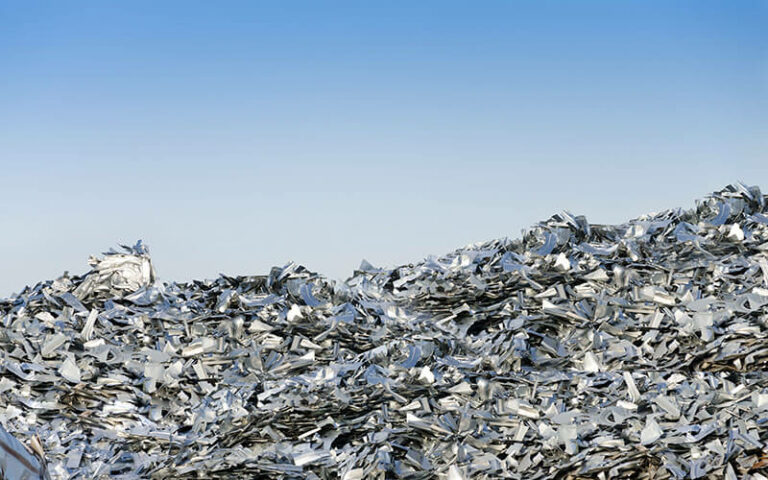The recycling industry plays an essential role in promoting sustainability and economic efficiency. Among the various metals recycled, aluminium and copper stand out due to their extensive applications and high recyclability. The prices of scrap aluminium and copper scrap metal are influenced by many factors, making them critical market dynamics indicators. This article delves into the elements shaping these prices and their current trends.
Factors Influencing Scrap Aluminium Prices
Scrap aluminium price are subject to economic, environmental, and geopolitical factors. Understanding these influences is crucial for stakeholders in the recycling and manufacturing sectors.
- Supply and Demand Dynamics: The balance between supply and demand is a fundamental driver of scrap aluminium prices. High automotive, aerospace and construction demand can push prices upward. At the same time, an oversupply of scrap aluminium can lead to price declines.
- Energy Costs: The production of aluminium is highly energy-intensive. Therefore, fluctuations in energy prices, particularly electricity, can significantly impact the cost of producing aluminium and its scrap value. Rising energy costs typically lead to higher aluminium prices.
- Recycling Rates: The efficiency and rate of aluminium recycling also play a role. Advances in recycling technology that increase the yield and quality of recycled aluminium can affect its market price by boosting supply.
- Economic Conditions: The overall state of the global economy influences aluminium prices. During economic expansions, industrial activity increases, driving up demand for aluminium. Conversely, economic downturns can reduce demand and lower prices.
- Regulatory Environment: Environmental regulations promoting recycling can increase the demand for scrap aluminium. Conversely, stringent mining and production regulations can constrain supply, impacting prices.
Current Trends in Scrap Aluminium Prices
As of 2024, several trends are shaping the scrap aluminium market:
- Green Manufacturing Initiatives: There is a growing emphasis on sustainable manufacturing practices. Industries increasingly use recycled aluminium to reduce their carbon footprint, boosting demand and prices for scrap aluminium.
- Technological Advancements: Improvements in recycling technologies have increased the efficiency and quality of recycled aluminium, enhancing its attractiveness and market value.
- Automotive Industry Demand: The automotive industry’s shift towards lightweight, fuel-efficient vehicles has increased the demand for aluminium. Electric vehicles, in particular, use significant amounts of aluminium, driving up scrap prices.
- Global Trade Dynamics: Trade policies and tariffs can impact the flow of scrap aluminium. Restrictions or tariffs on aluminium imports and exports can lead to price fluctuations.
Factors Influencing Copper Scrap Metal Prices
Copper is another crucial metal with widespread applications, particularly in the electrical and construction sectors. The price of copper scrap metal is influenced by a variety of factors:
- Industrial Demand: Copper’s extensive use in construction, electronics, and renewable energy sectors makes its demand a significant price driver. Periods of high industrial activity typically lead to higher copper scrap prices.
- Supply Chain Disruptions: Events that disrupt the mining or transportation of copper, such as strikes, natural disasters, or geopolitical conflicts, can constrain supply and increase prices.
- Technological Demand: The growing adoption of electric vehicles and renewable energy technologies, which require significant amounts of copper, has boosted demand and prices for copper scrap metal.
- Global Economic Conditions: Like aluminium, the overall economic environment impacts copper prices. Economic growth spurs industrial activity, increasing demand for copper, while economic downturns have the opposite effect.
- Environmental and Regulatory Factors: Regulations promoting recycling and sustainable practices can enhance the demand for copper scrap. Conversely, regulations that impact mining operations can affect supply and prices.
Current Trends in Copper Scrap Metal Prices
Several ongoing trends are influencing copper scrap metal price in 2024:
- Sustainability Efforts: With an increasing focus on sustainability, a rising demand for recycled copper exists. This trend is driven by industries aiming to reduce their environmental impact.
- Infrastructure Investments: Major economies invest in infrastructure development, which typically requires large quantities of copper for wiring, plumbing, and other applications. This has contributed to higher copper scrap prices.
- Technological Innovations: Advances in recycling technology are enhancing the efficiency and yield of copper recovery, potentially stabilizing prices by increasing the supply of recycled copper.
- Market Speculation: Commodity market speculation can also influence copper prices. Traders’ expectations about future supply and demand can lead to price volatility.
Conclusion
The prices of scrap aluminium and copper scrap metal are shaped by a complex interplay of supply and demand, economic conditions, technological advancements, and regulatory influences. As industries continue to progress and sustainability becomes a central focus, understanding these factors is essential for stakeholders in the recycling market. Keeping an eye on new trends and future developments will help you make informed opinions and navigate the dynamic landscape of scrap metal trading.
